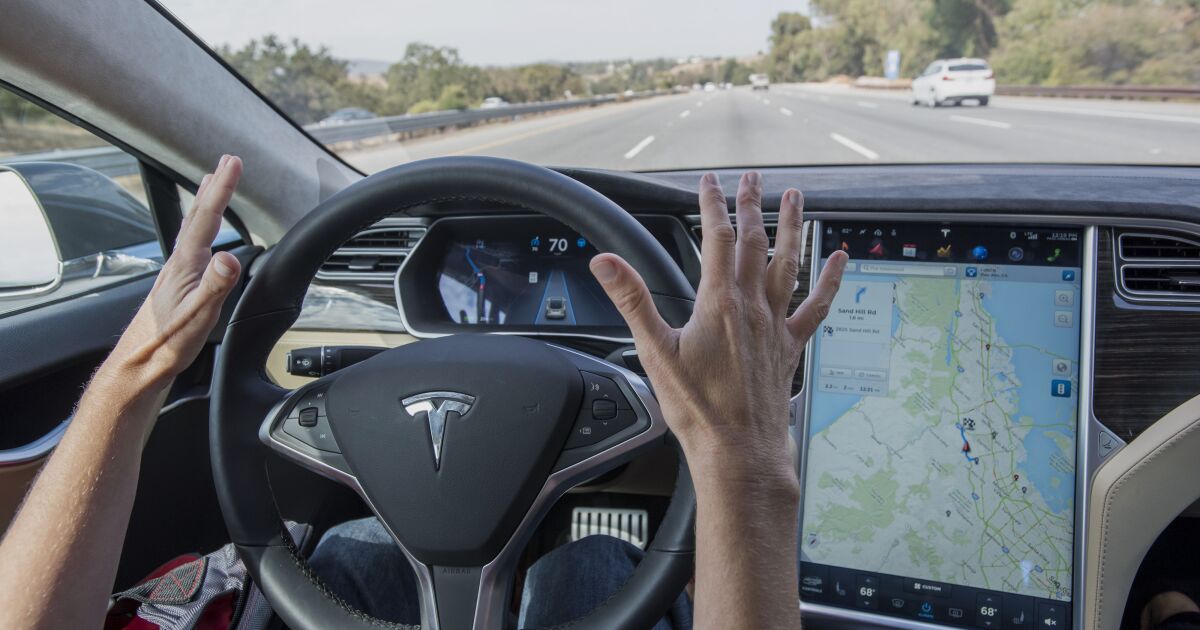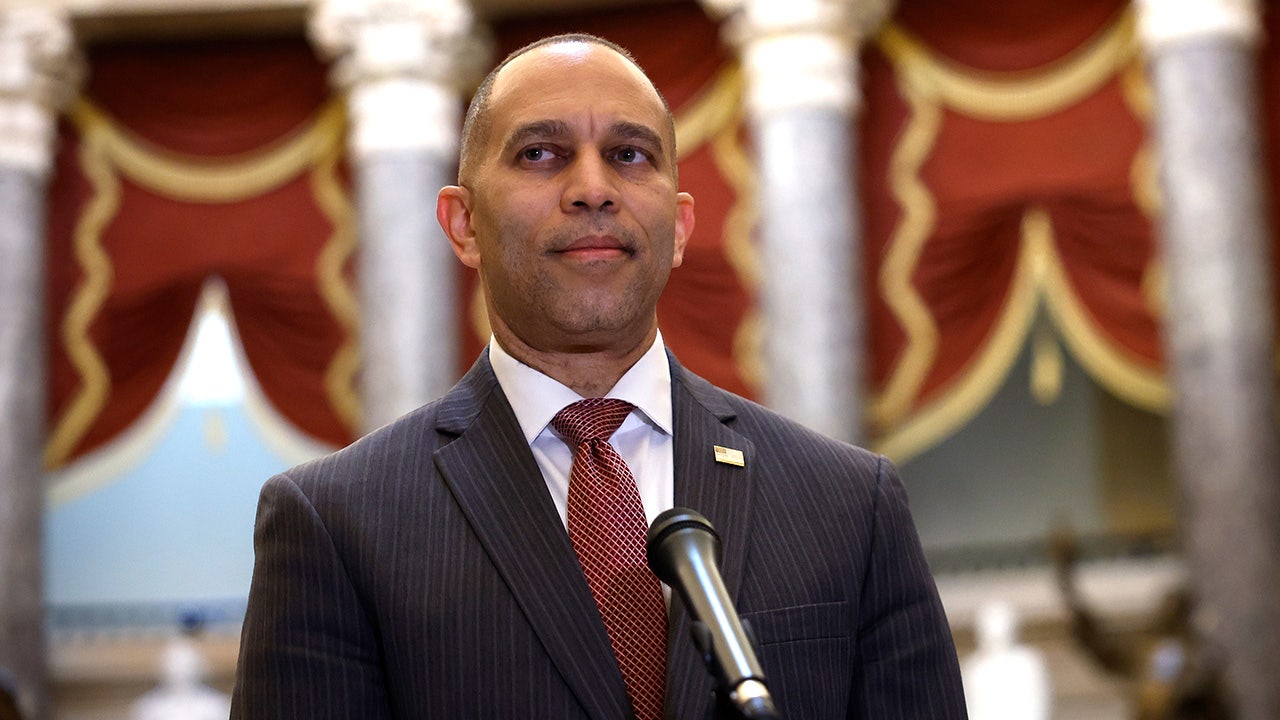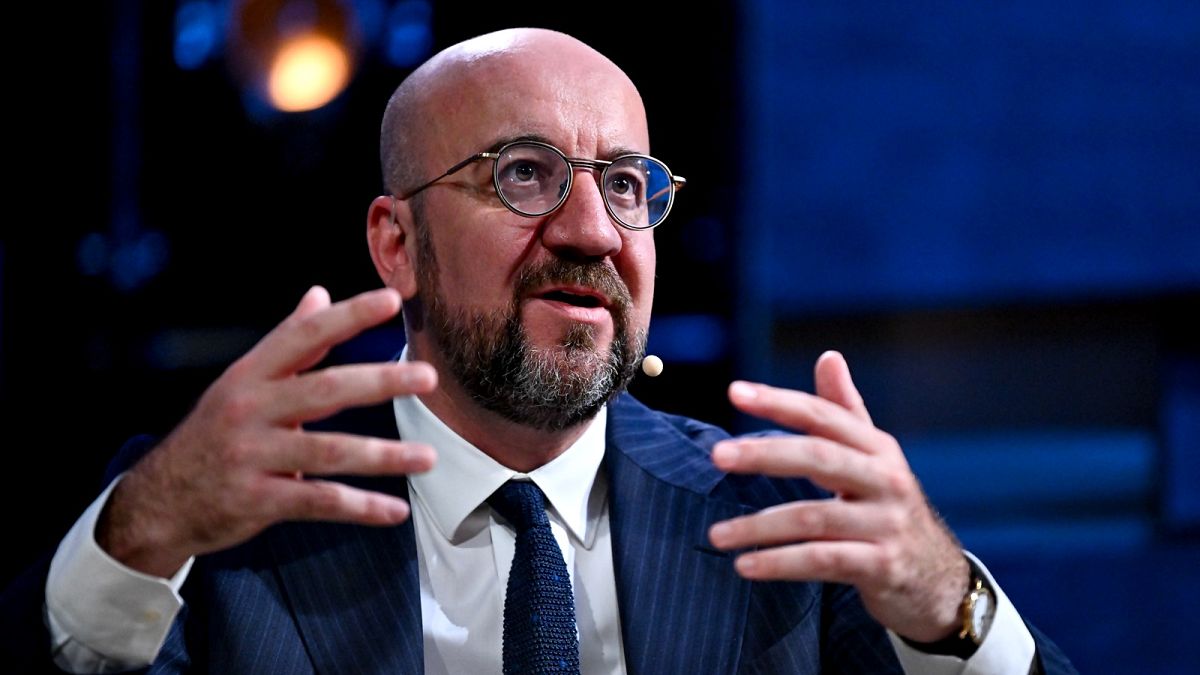Politics
Driverless trucks on California highways? Legislators don’t trust the DMV to ensure safety

When Teslas are in self-driving mode, they’ve been recorded crossing into oncoming traffic and hitting parked cars. But what would happen if an 80,000-pound, 18-wheel driverless truck suddenly went off the rails?
That’s an experiment some California legislators aren’t ready to run. They argue that the state Department of Motor Vehicles has so badly mishandled the driverless car industry that it can’t be trusted to oversee big rigs barreling down the highways autonomously.
AB 316 — which would wrest control of driverless truck testing and deployment from the DMV and require human drivers in the cab for at least five years while a safety record is collected — passed in the Assembly on Wednesday. The bill now goes to the state Senate and if passed will head to Gov. Gavin Newsom for his signature.
Its proponents argue that effective laws and regulations depend on shared data, institutional trust and public transparency, and that the DMV is struggling with all three.
“Ultimately, this issue is of such importance and relevance that we can’t abdicate our responsibility to the DMV, and the DMV doesn’t have the capacity to think about the consequences going forward,” Assemblyman Ash Kalra (D-San Jose) said in an interview.
Laura Friedman, chair of state Assembly’s transportation committee, explains her lack of trust in the DMV. (California State Assembly)
In a recent hearing, Laura Friedman (D-Glendale), the head of the Assembly’s transportation committee, put it more plainly: “The DMV has not done a great job at regulating this space.”
DMV Director Steve Gordon did not respond to a request from The Times for comment. In fact, the former Silicon Valley executive has rarely spoken with the media about anything at all since Newsom named him to the post in 2019.
The driverless truck industry, however, has pushed back hard, saying AB 316 would harm California’s technological competitiveness. Meanwhile, public debate over the bill is highlighting concerns about safety and job loss, as human drivers of commercial vehicles face replacement by computer systems programmed with artificial intelligence.
How we got here
The Legislature handed driverless vehicle regulation to the DMV when it passed its first bill governing such vehicles in 2012. Hearings held at the time focused on the wonderful future ahead for driverless cars — no more crashes, no more traffic jams.
Autonomous vehicle engineers, including former Google executive Anthony Levandowski, made safety claims that went largely unchallenged. “Our data so far is showing that the technology is able to drive safer than our trained and professional drivers at the wheel,” he said.
Because AI vehicles theoretically could drive at high speeds bumper to bumper, “it’ll really clear up the 110 and the 405 and the 710,” said Mark DeSaulnier, then the chair of the state Senate transportation committee. (DeSaulnier is now a member of Congress.)
Eleven years later, those freeways are as jam-packed as ever. And the safety information on those self-driving passenger cars? It’s spotty — in large part because the DMV and the vehicle industry are working to keep key safety data out of public view.
In 2021, after a public records filing by an unidentified individual, the DMV invited Waymo to seek a court injunction to prevent the agency from releasing full crash reports.

Waymo and the DMV worked together on a precedent-setting court agreement that allows the company to black out safety information on the public version of its robotaxi crash reports.
(California Department of Motor Vehicles)
After the injunction was granted, the DMV — with the legal assistance of California Atty. Gen. Rob Bonta — cut a deal with Waymo to keep the information concealed on the grounds of protecting company trade secrets, according to court records. The deal, approved in Sacramento County Superior Court, allows Waymo to redact most of the details of collision reports as well as information on how the company handles driverless car emergencies, for at least two years.
Although those vehicles, thus far, have not killed or seriously injured anyone in the state, news reports show they can cause plenty of problems on the road: They tend to brake suddenly; block traffic as they pause to decide what to do; cruise through construction zones; and “brick” or stall in traffic, requiring a human on the scene to move the car. They’ve even fled from police.
What Tesla has to do with it
Although the performance of Waymo and Cruise robotaxis operating in San Francisco concerns many legislators — including Friedman — what is especially troubling, they say, is the DMV’s relationship with Tesla.
That is “what really tilted the balance for me” to support AB 316, Friedman said. At a committee hearing in March, she slammed the DMV “particularly in regard to one particular auto manufacturer and their overstated promise of what their vehicle actually is capable of doing.” Friedman argued that Tesla’s marketing claims are “leading to confusion from the drivers and purchasers of those vehicles and to lots of tragic accidents that could have been prevented with better oversight from the DMV and [federal] regulators.”
The department allows the electric-car company to test driverless technology on California roads without a permit, while other companies are expected to conform to rules that require permits and trained test drivers. Tesla has said that the feature it calls Full Self-Driving is a technology that requires human attention, and doesn’t require a permit, according to email records released under California’s Public Records Act by the court transparency organization PlainSite.
Meanwhile, the DMV allows Tesla to market this technology package as Full Self-Driving. That name appears to violate the DMV’s own rule — now a state law — against marketing cars as autonomous when they aren’t capable of fully driving themselves. The DMV said the matter is under investigation, but that investigation has dragged on for more than two years.
“The lack of information after two years is deeply concerning,” said Lena Gonzalez (D-Long Beach), who heads the state Senate’s transportation committee.
When asked about the issue recently, Newsom said he had “great confidence” in Gordon and his team. The governor said he’s grateful for legislative oversight. But pressed on the specific criticisms aimed at the DMV, he said: “Forgive me for not being alarmed or shocked.”
What is — and isn’t — at stake
The driverless technology industry, centered in Silicon Valley, is opposed to AB 316. “The economic impact of this bill is going to be devastating,” said Jeff Farrah, who heads the Autonomous Vehicle Industry Assn., which represents Waymo, Cruise, Motional, Aurora Innovation and other driverless car and truck technology companies. “California will cede its position as a leader in the development of autonomous vehicles to other states that are embracing this lifesaving technology at a rapid pace.”
Bill supporters regard such statements as alarmist hyperbole.
“It’s easy for people to threaten to leave,” said Assemblywoman Cecilia Aguiar-Curry (D-Winters), co-author of the bill, which is supported by the Teamsters union. “People aren’t going to leave because of this,” she said, noting the rich pool of technology talent clustered in Silicon Valley. Tesla, in fact, announced in February that it would move its Texas engineering team back to California, in part to attract and retain talented engineers.
The industry notes that states including Texas, Arizona, Georgia and Florida already allow driverless trucks on public highways. AB 316 would slow down plans to deploy driverless trucks from Southern California seaports eastward across the country.
The bill would not block driverless truck deployment at the ports themselves or on private property. Asked whether the Port of Long Beach plans to allow testing anytime soon, Anthony Otto, chief executive of the port’s container terminal, said no. “It’s completely a safety issue,” he said.
Aguiar-Curry said for now she’s happy to let companies test driverless trucks away from California‘s highways, citing her constituents’ safety concerns.
She also contends that the trucking industry’s main concern is not safety but profit.
The business case for autonomous trucks is the vast reduction in labor costs when humans are no longer needed to do the driving. Replacing the estimated 350,000 truck drivers who work in California alone would lead to huge cost savings.
Notably, driverless truck companies are not yet profitable, and cash flow is a big issue. With rising interest rates, capital is harder to come by and the companies need to show progress to attract more investment before their cash runs out. One autonomous truck company, Embark, went bust earlier this year.
Driverless truck companies are funneling millions of dollars into research and development and studies documenting their safety and reliability profile. A recent study from Waymo on collision avoidance suggests the reaction time is quicker for the AI driver than for human beings.
However, as it fights AB 316, the Autonomous Vehicle Industry Assn. continues to make debatable claims about safety.
Farrah has said: “Autonomous trucks are safer than trucks operated by humans.” Former California Highway Patrol Officer Chris Childs, a paid consultant for the driverless vehicle industry group, recently told legislators that “in my opinion, autonomous technology is safer than a human driver.”
Although no major crashes involving driverless trucks have been reported, data on whether AI drivers are safer than humans aren’t yet able to settle the question. A paper published by the research group Rand Corp. said vehicles may have to be driven hundreds of billions of miles to make the case.
No legislator is alleging that AI-driven cars are necessarily less safe than those driven by humans. They’re saying no evidence has been presented, and the technology still has enough bugs to warrant more study, particularly before it’s extended to big-rig trucks.
Just having an AI semi truck stop dead on a freeway for a period of time could cause major traffic problems, said Assemblymember Laurie Davies (R-Laguna Niguel): “If something happens on [some stretches of] the 5 Freeway, there’s no way of getting around it. What do you do? How long does it actually take to move something like this?”
AB 316 would “give us the opportunity to find out what are the glitches when we’re looking at large vehicles like this, and how we fix them so they don’t happen again,” Davies said.
For its part, the driverless trucking industry contends that the Legislature lacks the expertise to adjudicate the issue correctly.
“The legislation puts the determination for very important safety and fact-based decisions in the hands of the Legislature instead of the able and experienced regulators at the DMV,” said Mufaddal Ezzy, head of government relations for Aurora Innovation.
Waymo head of government relations Annabel Chang said via email: “If the legislature takes away decision-making power from these experts and creates a complicated political process to approve the operation of autonomous trucks, it will result in indefinitely delayed improvements to road safety and sustainability.”
The experience level of the DMV regulators, however, is thin. The DMV official in charge of driverless car regulation, Miguel Acosta, has no prior experience in vehicle safety regulation or in motor vehicle technology. Before being named to his current job in 2018, he ran customer service for DMV vehicle registration and managed its field offices.

Politics
One Area Where Biden Is Leading Trump: His Number of Donors

President Biden may be struggling in national polls, but he recently overtook former President Donald J. Trump in at least one important measure: the total number of donors who have given to his campaign, which is often seen as a proxy for voter engagement.
Where each candidate has more donors or
fewer donors compared with 2020, by county
Across most of the country, Mr. Trump has fewer donors than he did at the same time in 2020, while Mr. Biden has more.
Detailed maps of where people have donated to the Trump and Biden campaigns in 2024 and in 2020 show that Mr. Biden is overperforming and that Mr. Trump is underperforming in many of the battleground states they will need to win, in comparison with where they were at this point in the 2020 cycle.
As of the end of March, Mr. Biden had 1.1 million unique individual donors, compared with one million for Mr. Trump. The difference is apparent in their total fund-raising hauls: Mr. Biden’s campaign committee has taken in nearly $160 million so far in this election cycle, compared with Mr. Trump’s $114 million.
The rematch between the two candidates offers an unusual opportunity for comparison. A New York Times analysis of data on individual donors from filings with the Federal Election Commission shows that Mr. Trump had fewer individual donors at the end of March than he did at the same time in 2020, while Mr. Biden had more than he did in 2020.
Note: Lines show the total number of unique individual donors who gave to either Trump or Biden by the date of their first donation.
The New York Times
Mr. Biden’s robust fund-raising is in stark contrast to his weakness in the polls. New surveys from The Times, Siena College and The Philadelphia Inquirer show him trailing Mr. Trump in several crucial battleground states, as Mr. Biden’s popularity has eroded among young people and voters of color.
The two candidates’ positions have reversed since March 2020, when Mr. Trump was running for re-election and Mr. Biden was closing in on his party’s nomination.
Mr. Biden was a late-breaking favorite in the 2020 primary race, having lagged for months in the polls behind his Democratic rivals. He became the party’s presumptive nominee on April 8, after the withdrawal of Senator Bernie Sanders of Vermont.
This year, Mr. Trump was long the prohibitive favorite in the Republican primary race, but did not become the presumptive nominee until early March, when his last opponent, Nikki Haley, bowed out of the contest.
The changing circumstances between March 2020 and this year are also apparent outside of battleground states, when total donors to both candidates are compared with the previous cycle.
In Delaware, Mr. Biden has roughly twice as many donors as Mr. Trump, an analysis of contributions by ZIP codes shows. But compared with March 2020, he has lost ground to Mr. Trump – which makes sense, because Mr. Biden’s home state was the early donor engine of his primary campaign in 2019 and early 2020.
Where each candidate has more donors or
fewer donors compared with 2020, by ZIP code
In New York City, Mr. Biden had a slight rise in donors relative to March 2020, while his number of donors in Manhattan has fallen steeply. The shift likely reflects his late emergence at the time as the party’s nominee. Mr. Trump has picked up donor support just outside the city on Long Island, which has been trending toward the Republican Party.
Where each candidate has more donors or
fewer donors compared with 2020, by ZIP code
In Arizona, which is a battleground state in 2024, Mr. Biden has picked up donors. He won the state in 2020 but trails Mr. Trump in 2024 polls there.
On close inspection, a few ZIP codes stand out. At the end of March 2020, Mr. Biden had about 150 donors in the ZIP code 86001, which makes up part of Flagstaff. This year, he had almost 300. Mr. Trump’s donors there declined to about 130 from about 150. Many ZIP codes around Tucson, Phoenix and Scottsdale also had an increase in Biden donors.
In neighboring Nevada, Mr. Trump has generally drawn more donors in the Las Vegas area than he did in 2020. The Times’s latest polls found that Mr. Biden’s support in that state had dropped from 2020.
Where each candidate has more donors or
fewer donors compared with 2020, by ZIP code
In Michigan, Mr. Biden had about 11 percent more donors than in 2020, driven by gains around Ann Arbor and in more traditionally conservative western parts of the state. But Mr. Biden did not gain donors in Dearborn, which has more residents with Middle Eastern ancestry or in Detroit, which is majority Black. Mr. Trump’s number of donors in the state fell by 8 percent, mostly because of dips in the Detroit suburbs and near Grand Rapids.
The latest Times/Siena polls show Mr. Trump leading among registered voters in Michigan, another battleground state.
Where each candidate has more donors orNorth Carolina and South Carolina
fewer donors compared with 2020, by ZIP code
The shifts in North Carolina and South Carolina are another illustration of how circumstances have changed for the two candidates. In South Carolina, Mr. Biden has lost donors compared with where he was in 2020, which makes sense: In 2020, the state had a competitive Democratic primary, which Mr. Biden won, setting off his march to the nomination. This year, it was Mr. Trump who had the competitive primary in South Carolina.
In North Carolina, a battleground state, Mr. Biden has gained donors relative to Mr. Trump since 2020. This could be welcome news for Democrats, who see the state as potentially winnable for Mr. Biden, after Mr. Trump won it narrowly in 2020.
Notes: Bars show the estimated number of individual donors who have given to each candidate in each state as of March 31. Numbers are estimates because of potential duplicate names or changes of address within the data.
The New York Times Methodology
Data includes donations reported to the Federal Election Commission by the Trump 2020 campaign, the Trump 2024 campaign, Trump Make America Great Again Committee, the Trump Victory joint fund-raising committee, Trump Save America Joint Fundraising Committee, Trump 47 Committee, Trump National Committee JFC, the Biden campaign, the Biden Victory Fund joint fund-raising committee and the Biden Action Fund joint fund-raising committee. Additional donations processed on behalf of those committees and reported by the online fund-raising platforms ActBlue and WinRed are also included.
The estimated number of individual donors was determined based on a unique combination of contributor name, state and ZIP code. Donors with invalid addresses were filtered out of the analysis. Dates of first donation were determined by the earliest contribution date for a unique individual donor to a 2020 or 2024 committee affiliated with either candidate.
Donations are counted through March 31 starting from the earliest announcement by one of the two candidates each cycle: April 25, 2019, for Mr. Biden in the 2020 cycle and November 15, 2022, for Mr. Trump in the 2024 cycle. Areas where the number of donors changed by five or fewer are not shown.
Donors in battleground states in the 2024 cycle
Politics
Southern border migrant encounters decrease slightly but gotaways still surge under Biden

The U.S. Border Patrol recorded ar decline in migrant encounters in April, the U.S. Customs and Border Protection (CBP) said in a news release Wednesday.
In April, the Border Patrol recorded 128,900 encounters between ports of entry along the southwest border. The figure was 30% lower than in April 2023, and 6% lower than in March.
“CBP continues to surge resources and personnel to impacted sectors along the border to ensure the safe, swift, and orderly processing of individuals to maximize expedited removals,” Troy Miller, a senior official performing the duties of the commissioner, said in a statement.
DHS’ FAILURE TO FILE PAPERWORK HAS LED TO 200K IMMIGRATION COURT CASES TOSSED UNDER PRESIDENT BIDEN: TRAC
A group of over 100 migrants attempting to enter the U.S. illegally rush a border wall on March 21. Migrant encounters at the southern border declined slightly in April, border officials said. (James Breeden for New York Post / Mega)
Despite the decline, separate figures obtained by Fox News revealed there were 1.6 million known gotaways from fiscal year 2021 to fiscal year 2023. In the decade of FY 2010 through FY 2020, under former Presidents Obama and Trump, authorities recorded more than 1.4 million known gotaways.
Known gotaways are illegal immigrants seen or detected via cameras, sensors, footings, etc., but are never apprehended.
“If a person is willing to put themselves into harm’s way crossing through very remote, very dangerous conditions to evade capture, you have to ask yourself why. What makes them willing to take that risk?” Border Patrol Chief Jason Owens asked a House committee in May 2023.
BORDER PATROL OFFICIALS SAY THREAT POSED BY ‘GOTAWAYS’ AT SOUTHERN BORDER ‘KEEPS US UP AT NIGHT’

President Biden has recently touted the decline in illegal border crossings. Border authorities on Wednesday said the number of migrant encounters declined in April. (Getty Images)
“That’s of concern to me. What’s also of concern to me is I don’t know who that individual is,” he added. “I don’t know where they came from. I don’t know what their intention is. I don’t know what they brought with them. That unknown represents a risk, a threat. It’s of great concern to anybody that wears this uniform.”
In April, CBP processed 41,400 people through appointments at ports of entry submitted on the CBP One app, authorities said. Since the app was introduced in January 2023, more than 591,000 people have scheduled appointments to present at ports of entry, CBP said.
Homeland Security Secretary Alejandro Mayorkas, who has been heavily criticized for the record numbers of migrants entering the U.S., has previously noted changes in migration flow in correspondence with Congress.
“Before 2013, the majority of individuals attempting to cross the border entered without being caught,” he said in a letter in January to the House Homeland Security Committee. “Under this administration, the estimated annual apprehension rate has averaged 78%, the same average rate of apprehension as in the prior administration.”
Fox News Digital’s Adam Shaw and Bill Melugin contributed to this report.
Politics
A secretary of State walks into a bar: Mixed reviews after Blinken rocks out in Kyiv

Was it guitar-hero time? Or a tone-deaf attempt at wartime solidarity?
Secretary of State Antony J. Blinken garnered some mixed reviews in the Ukrainian capital on Wednesday after busting out his ’80s-rock chops at a bedraggled but beloved Kyiv bar.
Some Ukrainians cheered Tuesday night’s packed-house performance as a show of warmth and support at a gloomy and frightening moment in Ukraine’s war against invading Russian forces.
For others, though, the top U.S. diplomat’s basement-bar gig with the local band 19.99 — who delivered a heartfelt but not-always-tuneful cover of Neil Young’s “Rockin’ in the Free World” — struck a discordant note.
Blinken’s drop-in appearance at the cellar-level Barman Diktat nightspot — impromptu-seeming but carefully planned, with watchful security in attendance — came at what military analysts are describing as a particularly perilous point in the more than two-year-old war.
Russian troops have staged a major cross-border assault in the country’s northeast corner, and the country’s second-largest city, Kharkiv, is under greater threat than since the start of the war. Thousands of Ukrainians have fled the latest fighting, and even far from the front lines, dread and anxiety are running high.
Much of the social-media commentary reacting to Blinken’s rhythm-guitar riff was lighthearted in tone, centering on jokes and memes. But it also generated some expressions of dismay.
The appearance “can be described in one word: inappropriateness,” Svitlana Matvienko, the executive director of an NGO called the Agency for Legislative Initiatives, wrote on Facebook.
Matvienko said she was thankful for U.S. and allied military aid, but that she was “offended by this performance, as a Ukrainian citizen whose loved ones are giving up everything so that we can resist.”
Others, though, saw a nod to a culture of wartime defiance that finds an outlet in the capital’s club scene, a Europe-wide magnet before the Russian invasion — which now serves as a pressure valve in dark times.
“I thought it was kind of like, he’s a big politician and he plays rock music in a bar — cool, why not?” said Mariia Lobyntseva, 27, an artist in Kyiv. “Young people can’t stop going out and letting off steam at bars. It’s necessary for us.”
The bar in question, located in an alley off Kyiv’s main drag, has been a popular venue for many years, although the name has changed a few times.
On most nights, there’s a live band on the small stage in the far side of the cavernous room. Musical offerings can vary widely: a string quartet from the National Philharmonic of Ukraine one night, a jazz ensemble on another.
Kyiv still maintains a wartime curfew of midnight, but it’s not unusual for the bar to be packed until last call — just in time for the bar crew to clean up and hurry home, with nights often punctured by air alerts.
Not a few commentators pointed out that the lyrics of singer-songwriter Young’s 1989 hit “Rockin’ in the Free World,” actually constitute a biting commentary on the poverty and despair that plagues wealthy Western societies.
Blinken, though, made clear he was leaning into the song’s famous chorus as a means of conveying encouragement to a war-pummeled populace.
“I know this is a really, really difficult time,” the secretary of State told the crowd at the start of the musical interlude, citing suffering in the country’s northeast and elsewhere. But he said of Ukraine’s fight: “The free world is with you.”
Some Ukrainians who were bemused by the episode nonetheless perceived it as a display of goodwill — even if a slightly clumsy one.
“Many of my colleagues were sharing different emotions about the event, whether the timing or the lyrics were right,” said Margo Gontar, a 35-year-old blogger.
But if band members wanted Blinken up there on stage with them, she said, “then definitely I consider this to be a sign of support.”
Reacting to negative commentary, some Ukrainians said indignation over Blinken’s performance was misplaced.
“Yeah, maybe his attempt to demonstrate informality and soft power by playing a song at our favorite bar in central Kyiv took place at a bad time,” journalist and author Illia Ponomarenko wrote on X. But Blinken, he said, was “the last person we need to focus our bitterness and anger on.”
Without U.S. aid, Ponomarenko wrote, “half of us would have been rotting in a pit with a bullet in our heads and with our hands behind our backs; the other half would have been seeking refuge elsewhere in the world and reading sad news about a ‘Ukrainian National Government in Exile.’”
Special correspondent Ayres reported from Kyiv and Times staff writer King from Washington.
-

 News1 week ago
News1 week agoCompass Direct LLC’s 2024 Registration in North Carolina
-

 World1 week ago
World1 week agoTech compliance reports, Newsletter
-

 News1 week ago
News1 week agoMan, 75, confesses to killing wife in hospital because he couldn’t afford her care, court documents say
-

 News1 week ago
News1 week agoColumbia University cancels its main commencement ceremony after weeks of turmoil
-

 World1 week ago
World1 week agoPentagon chief confirms US pause on weapons shipment to Israel
-

 Politics1 week ago
Politics1 week agoPresidential polls show deadlocked race as party conventions quickly approach
-

 World1 week ago
World1 week agoConvicted MEP's expense claims must be published: EU court
-

 Politics1 week ago
Politics1 week agoRFK Jr said a worm ate part of his brain and died in his head














